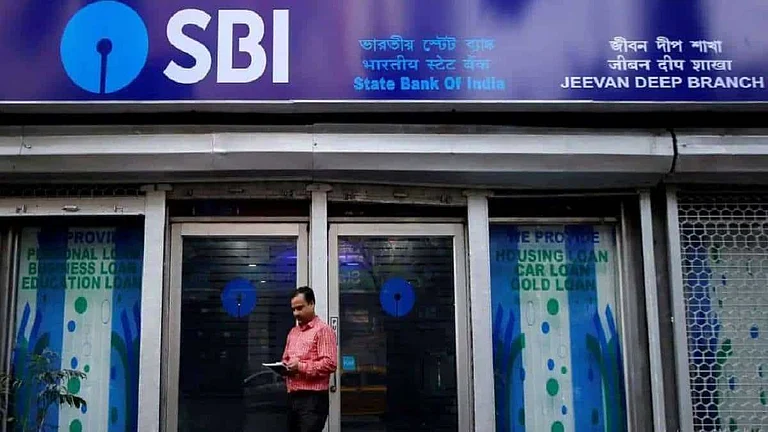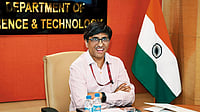Uttar Pradesh (UP), with its rich cluster of culturally significant and tourism-friendly cities, is well positioned to harness technology to drive growth, said Anurag Yadav, Principal Secretary, department of IT and electronics, UP.
“Cities like Prayagraj, Varanasi and Lucknow will benefit from tech-enabled initiatives that not only promote tourism and generate employment but, most importantly, help preserve our cultural heritage for future generations. Mahakumbh 2025 is a prime example of this powerful synergy between culture and technology,” he added.
In a conversation with Outlook Business, the secretary discussed ongoing semiconductor projects in the state, the positive economic impact of the upcoming Jewar airport on nearby cities like Noida and the UP government's future plans for equitable resource distribution in its journey toward technological advancement.
As UP’s IT policy gaining traction, how does it stack up against tech hubs like Karnataka, Tamil Nadu and Maharashtra? What unique edge does it offer?
When you look at the entire ecosystem of the IT and electronics industry—fortunately, Noida and this NCR region comprising Noida, Greater Noida and the Yamuna expressway industrial development authority, which is coming up with Jewar—they have not only been designing but also manufacturing.
If you look at the history of the IT industry’s growth, IIT Kanpur, IIT-BHU and other technical institutes in UP were already there. Look at the stalwarts of today’s IT industry—whether it is Narayana Murthy or Nandan Nilekani—they were from IIT Kanpur. The potential of human resources or talent was always there; it was just awaiting an ecosystem where companies could be set up.
As of now, the edge that UP is offering lies in four to five key strategies we are actively working on. First is world-class infrastructure. UP is now recognised as the “Expressway State”, with connectivity across its length and breadth vastly improved. From Noida, you can reach even the farthest points such as Varanasi or the Bihar border in a short span of time. The state boasts one of the finest road networks in the country. In terms of air connectivity, more than 20 locations in UP now have operational airports and five of them have international status. For any company or professional, quality infrastructure is essential and UP now offers excellent housing, roads and airline connectivity.
Second is the presence of quality education and medical facilities. As I have already mentioned, UP has significantly enhanced its capabilities in both these areas, providing all the essential ingredients needed to support a high-quality workforce and ensure a good quality of life.
Our work on improving the ease of doing business is significant. We have drastically reduced the compliance burden for new enterprises. In fact, UP was recently ranked second among all Indian states in ease of doing business. We have implemented a robust single-window clearance system to streamline approvals for industries and business units.
We are also offering competitive incentives. These include up to 75% subsidy on land and 100% exemption on stamp duty. Additionally, we have recently introduced a GCC [Global Capability Centre] policy that provides strong employment-linked benefits.
In summary, compared to many other states, UP today offers not just superior infrastructure but also more attractive incentives for individual business units.
Noida is already a prominent IT hub, could it challenge Jewar’s development or will both regions grow in a complementary manner?
It is a complement, not a challenge, because if you look at the size of the state, UP will rank fourth or fifth in population if it were a country. For such a large state, there cannot be competition among its cities. Each city plays a distinct role. For example, what Jewar is set to do will complement the logistics ecosystem required by industries already established in Noida.
Take the new semiconductor unit, which everyone is talking about. It was recently cleared by the Cabinet. This is the HCL–Foxconn alliance project coming up in the Yamuna development authority region. Once chip packaging and manufacturing begin there, Jewar will support these industries by facilitating distribution not just across India but globally.
Jewar international airport and Jewar as a logistics hub are integral to a broader development strategy for UP. Rather than competing with Noida, Jewar will serve as a complementary asset enhancing infrastructure to support Noida’s continued growth.
As UP modernises cities like Lucknow and Varanasi into tech hubs, can heritage be preserved amid rapid development? What potential challenges do you foresee in balancing urban development with heritage preservation during this transition?
Whether the wave of modernity we are seeing now poses a threat to our heritage is a valid question. This kind of fear has always existed in the human mind—the dilemma of whether modernity will override ancient traditions or culture. But when it comes to IT and development, I would argue that it is not just compatible with our heritage, it is essential.
Take the example of the MahaKumbh Mela that took place in Prayagraj this year, which is arguably the largest religious congregation in the world. Its successful organisation was made possible not only through physical resources deployed by the state but also critically through technology. The command centre was operational round the clock and the kind of coordination and infrastructure required to facilitate crores of people visiting Prayagraj every day could only have been achieved through technological support.
Imagine a scenario where 10 to 20 crore people are trying to connect with their loved ones at the same time. Within just a 2–3 km radius of the Sangam area, there is a massive crowd, all trying to use their mobile phones and access the internet. Providing that level of digital infrastructure was not just about convenience; it was about making such a large-scale event function smoothly.
Technology is not threatening our heritage; it is enhancing it. It is helping us promote tourism, create new jobs and most importantly, preserve our culture for future generations. Far from being a threat, it is a powerful tool for cultural conservation and growth.
The UP government offers a 75% land subsidy under the Semiconductor Policy 2024. How does it plan to manage potential real estate demand and price surges from this move?
If you look at the policy measures we have adopted, particularly in terms of urban planning and how we manage our land resources, you will see that several important steps are already underway.
We are actively working on these initiatives and in a short span of time, UP is implementing many of them. To illustrate: unlocking the value of land often requires regulatory reforms that make land use policies more liberal. For example, consider the concept of floor area ratio (FAR) or floor space index (FSI).
Today, we have the infrastructure to support high-rise buildings, something that was not feasible 40 or 50 years ago due to technological limitations. Now, if one looks at cities like Delhi or neighbouring Gurgaon, most residential societies are high-rises. This vertical growth is one way to optimise land use instead of expanding horizontally.
Another important approach is to make landholders partners in the growth strategy. This is where land pooling comes into play. Traditionally, the government acquired land by paying compensation to landowners and this continues to be a very generous process, often offering two to four times the market price. But the land pooling model goes a step further. Instead of just compensation, the landowner becomes a stakeholder in the development. That means they share in the value addition that comes from the development of their land.
UP is actively working to promote this model. Our housing department is developing a land pooling policy and I am happy to share that the Lucknow development authority (LDA) has already launched a scheme in the IT city project based on land pooling. There has been a very positive response from the public, a lot of enthusiasm and willingness to participate. This approach of involving people directly as stakeholders in urban land development is proving to be effective.
Does the Semiconductor Policy 2024 offer differentiated incentives for foreign firms bringing advanced tech vs Indian start-ups or mid-sized fabless design companies?
The start-up journey typically involves three key stages: the ideation stage, where entrepreneurs need support to sustain themselves while working on their ideas; the prototyping and testing stage, where they develop a prototype and test its market potential and finally, the commercialisation stage, where they need funding to begin actual production. UP’s start-up policy is designed to support entrepreneurs through each of these phases.
We have established incubation centres across all districts to provide grassroots support. At the ideation stage, the state offers a prototype grant of ₹5 lakh. As the start-up matures, this support increases up to ₹11 lakh and if the start-up is women-led or located in remote areas like eastern UP, the support is enhanced by 25%, taking the total to around ₹15 lakh.
Beyond this, we have created a ₹1,000 crore fund of funds (FoF) in collaboration with SIDBI to help start-ups transition into full-scale commercial ventures. While the Government of India has its own FoF, very few states have developed such a mechanism at the state level and UP is proud to be one of them.
So far, more than 350 start-ups have received support through this initiative. Several of these start-ups, which began their journey in incubators at institutions like IIT Kanpur and IIT BHU, have scaled significantly, with some now valued at over ₹100 crore. Throughout this journey, from ideation to market launch, we run continuous programmes to ensure start-ups are sustained, supported in their product development and eventually funded for commercial success.
Data centres are a UP priority under its digital push, but the state already has high power consumption. How will it balance rising energy demands with existing rural and urban needs?
One of the key transformations we have focused on, especially in the context of infrastructure development, is in the power sector. UP has been consistently working not just on power generation but also on transmission and distribution. Today, UP has a generation capacity of over 30,000 megawatts, which includes both self-generated power and tied-up capacities. In comparison, our peak demand, even during high-consumption periods like summer, typically reaches around 25,000 megawatts. So currently, UP is a power-surplus state, which is a major advantage for industries.
This power surplus has significantly supported our data centre policy, which has received an excellent response. We already have eight data centres in various stages of development—some have even reached the stage of commercial operations. These units are being provided with uninterrupted power supply in line with the specific reliability standards required for data centres, including the provision of parallel power lines for redundancy.
Moreover, UP is not only one of the largest consumers of data but is also poised to become one of the largest states for data storage—an essential component in today’s digital economy. Whether it is power or water, UP currently has sufficient surplus capacity to support data centres and other infrastructure-heavy industries.
Many investors who have set up their first unit in UP are now planning to expand, which reflects their trust and confidence in the state’s infrastructure—be it in power, roads, security or other critical enablers. This is precisely the kind of industrial ecosystem that is driving our collective effort towards achieving the $1trn economy vision set by the Chief Minister.






























